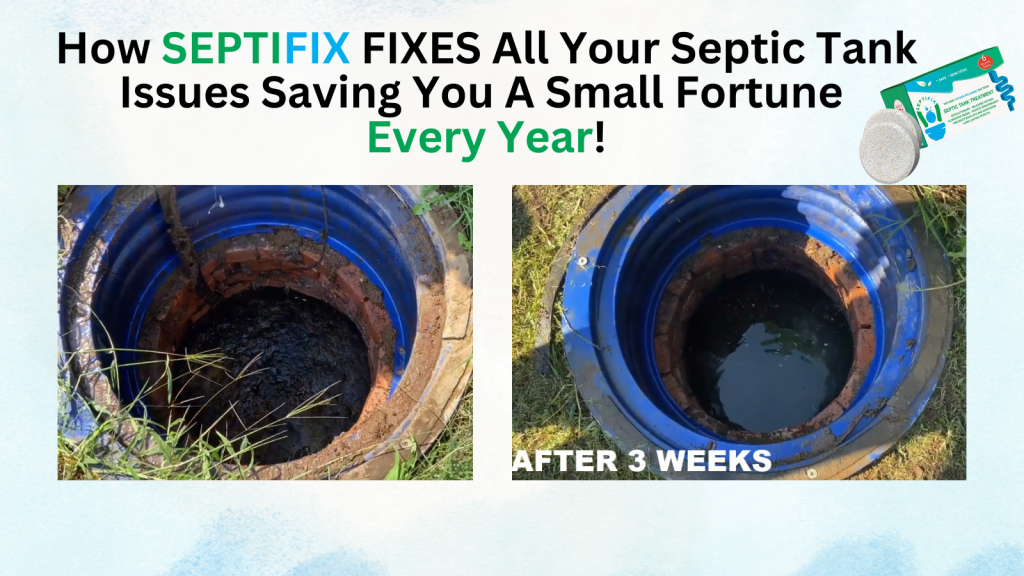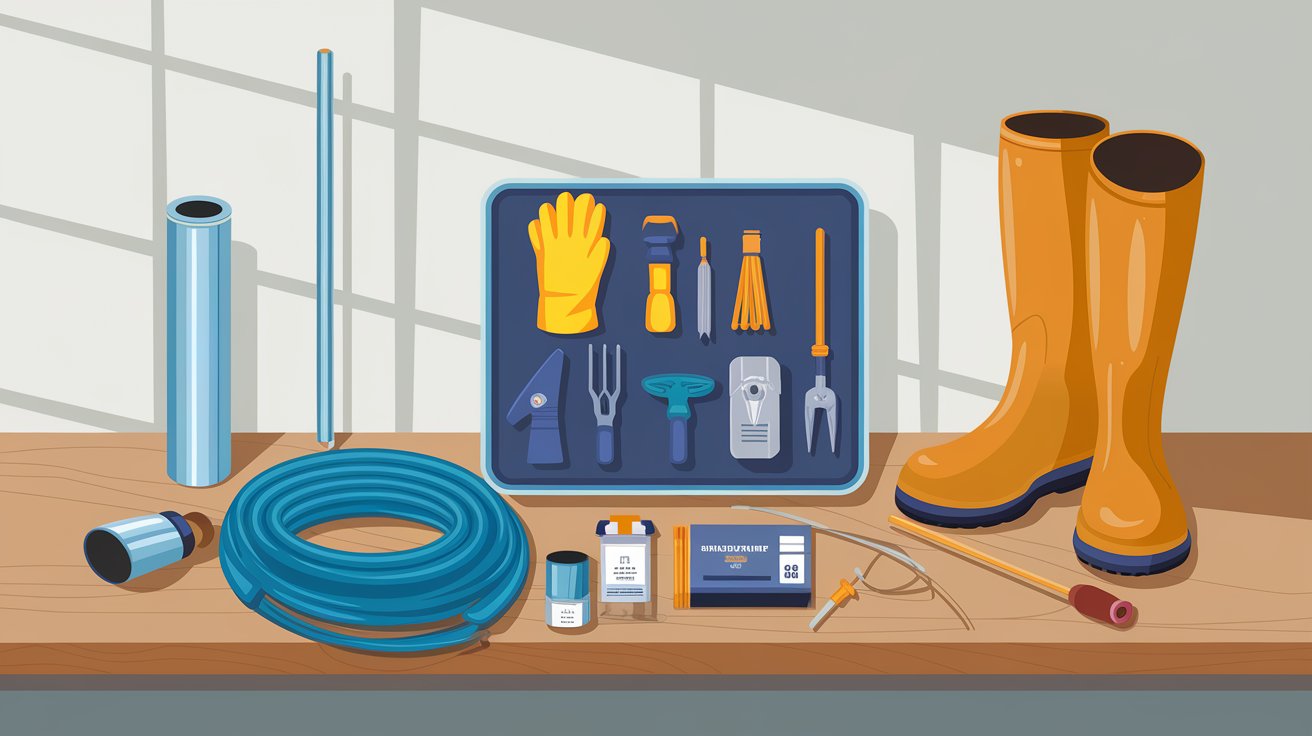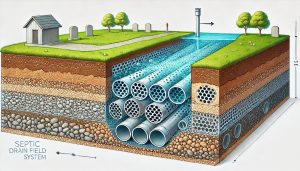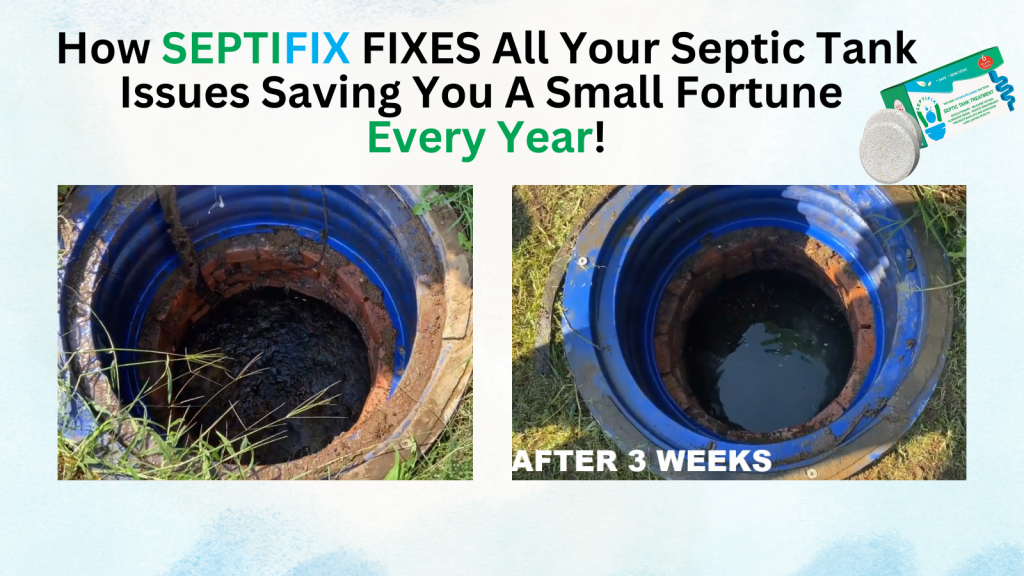If you’re a homeowner wondering about the tools needed for septic maintenance, you’re not alone. Whether you call it a septic system, onsite wastewater treatment, or a household sewage solution, keeping it running smoothly is crucial to avoid costly repairs and backups. Fortunately, with the right tools and a bit of know-how, many basic maintenance tasks can be safely managed by DIY enthusiasts. This article walks you through the must-have tools, safety tips, and when to call a pro.
- Why Septic System Maintenance Matters
- Basic Tools for Septic Maintenance
- Protective Gear You Should Always Use
- Tools for Drainfield Maintenance
- What Not to Do with Septic Tools
- When to Call a Professional
- Contact Info and Resources
- Septifix Power for Your Septic System
- Septic Permit Links by State
Why Septic System Maintenance Matters
Routine maintenance is key to keeping your system operating efficiently. A neglected system can lead to blockages, foul odors, groundwater contamination, and even complete system failure. While professional inspections and pumping are necessary every few years, in between those visits, homeowners can take proactive steps to extend their system’s lifespan.
What Are Eco-Friendly Septic Solutions?
Managing a Sewage Overflow in the Yard
Basic Tools for Septic Maintenance
1. Septic Tank Riser and Lid Removal Tools
If your system has a riser, it’s much easier to access the tank without digging. But you’ll still need:
- A riser key or lid removal wrench for safe, easy access
- Heavy-duty gloves to protect your hands
- A sturdy flathead screwdriver or pry bar (in case the lid is stuck)
💡 Pro tip: Some risers are sealed with silicone or bolts. Make sure you have the right socket wrench if needed.
2. Sludge Measuring Stick (Sludge Judge)
To check when it’s time to pump, use a sludge judge – a long, transparent pipe that helps measure how much solid waste is in your tank. This gives you real insight into the tank’s condition between professional cleanings.
- DIY option: Use a long PVC pipe with a check valve at the end
- Make sure it’s marked in inches or feet to estimate sludge depth
3. Garden Hose and Spray Nozzle
You’ll need a high-pressure garden hose with a nozzle to clean filters, rinse components, or even flush pipes in basic maintenance routines. It’s a low-cost but high-utility tool for keeping things clear.
- Choose a nozzle with multiple settings
- Use it to clean effluent filters (important secondary keyword) or unclog minor obstructions
4. Effluent Filter Puller or Brush
Effluent filters help keep solids from leaving the tank. Over time, they clog and need cleaning.
- A filter puller tool helps you safely remove it
- Use a long-handled toilet brush or soft nylon brush for scrubbing
- Wear eye protection and gloves, as cleaning this part can get messy
5. Pipe Inspection Camera (Optional but Handy)
While not essential for every homeowner, a sewer scope camera can help identify issues like root intrusion, grease buildup, or pipe obstructions in drain lines.
- Ideal for troubleshooting before calling a pro
- Look for a model with at least 50 feet of cable and built-in LED lights
Protective Gear You Should Always Use
Working around septic tanks and components involves potential exposure to harmful bacteria and gases. Always protect yourself with:
- Thick rubber gloves
- Safety goggles or a face shield
- Heavy-duty work boots
- Disposable coveralls or old clothes
- Respirator mask if opening the tank
Safety First: Avoid breathing in tank fumes. Septic gases like methane and hydrogen sulfide are dangerous in high concentrations.
Tools for Drainfield Maintenance
Your drainfield (also called leach field or soil absorption area) requires care too. While digging or heavy inspections are best left to pros, basic DIY tools include:
- Soil probe to check for soggy spots or surfacing effluent
- Tape measure to monitor surface distances from trees or buildings
- Shovel and rake to keep the area clear of debris and vegetation
What Not to Do with Septic Tools
- Don’t enter the tank. It’s extremely dangerous due to toxic gas accumulation.
- Don’t use electric tools near tank openings—explosive gases can ignite.
- Don’t substitute proper safety gear with household gloves or open-toed shoes.
- Don’t skip professional inspections—even the best DIYer can’t see everything.
When to Call a Professional
Even with the right tools, some jobs should be left to the experts:
- Septic tank pumping
- Drainfield replacement
- System failure diagnostics
- Permitted repairs or installations
If you’re ever unsure, contact a licensed septic service provider in your area. Tools are helpful, but experience matters too.
Contact Info and Resources
Looking for more help with septic maintenance?
- EPA SepticSmart – Trusted guidance from the U.S. Environmental Protection Agency
- National Onsite Wastewater Recycling Association (NOWRA) – Locate certified professionals
- How Often to Pump Your Tank – A helpful septic system care chart
- Search for “onsite wastewater services near me” to find local pros
- Consider using maintenance logs or apps to keep track of inspections and cleanings
Conclusion
Owning a septic system doesn’t have to be overwhelming. By equipping yourself with the tools needed for septic maintenance and knowing how to use them safely, you can prevent problems and keep your system in top shape. Just remember—some jobs are best left to professionals.
Ready to tackle septic maintenance like a pro? Stock your shed with the essentials and take pride in protecting your home’s wastewater system!e tools and following proper maintenance practices, you can extend the life of your system, avoid costly repairs, and protect your property and the environment. Of course, when issues go beyond basic upkeep, don’t hesitate to seek professional help to ensure everything is handled properly.
Directory | Washington Septic Service Providers | Part 2
Directory | Washington Septic Service Providers | Part 1
DIY Repairs Are Always Cheaper
Septic Regulations in Rural Areas: Essential Guide for Rural Property Owners
The Role of Perforated Pipes in Drain Fields
What Happens During a Pumping Service?
Septic Tanks vs. Sewer Systems | Choosing the Right Option
Directory | Virginia Septic Service Providers | Part 2
Septifix Power for Your Septic System










